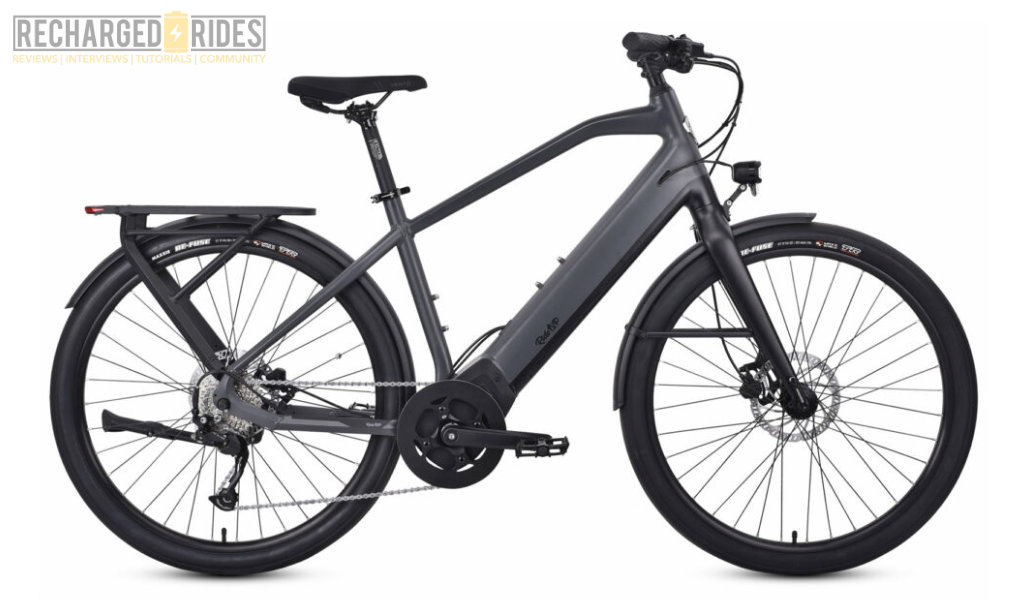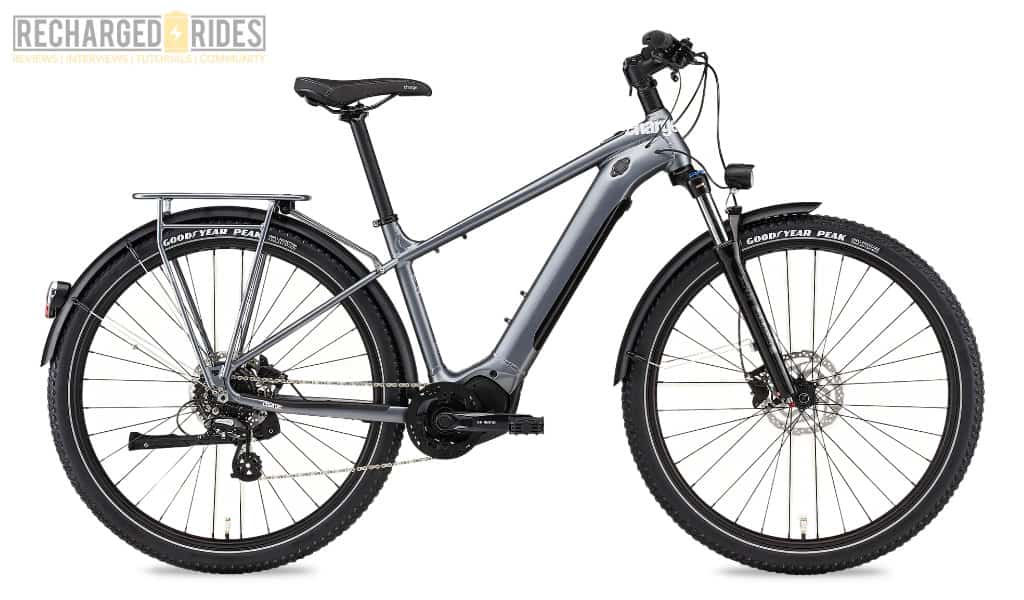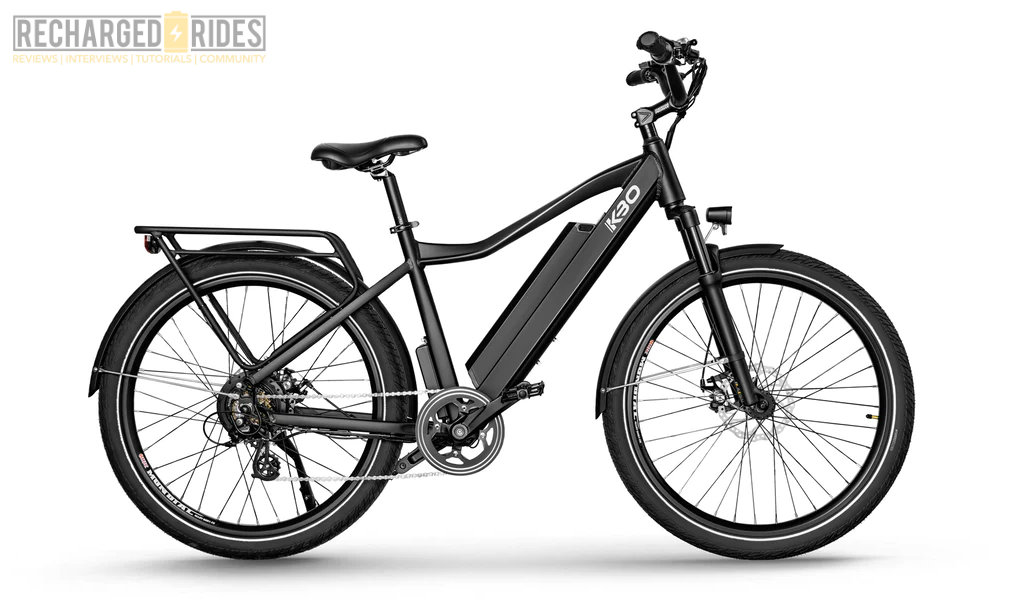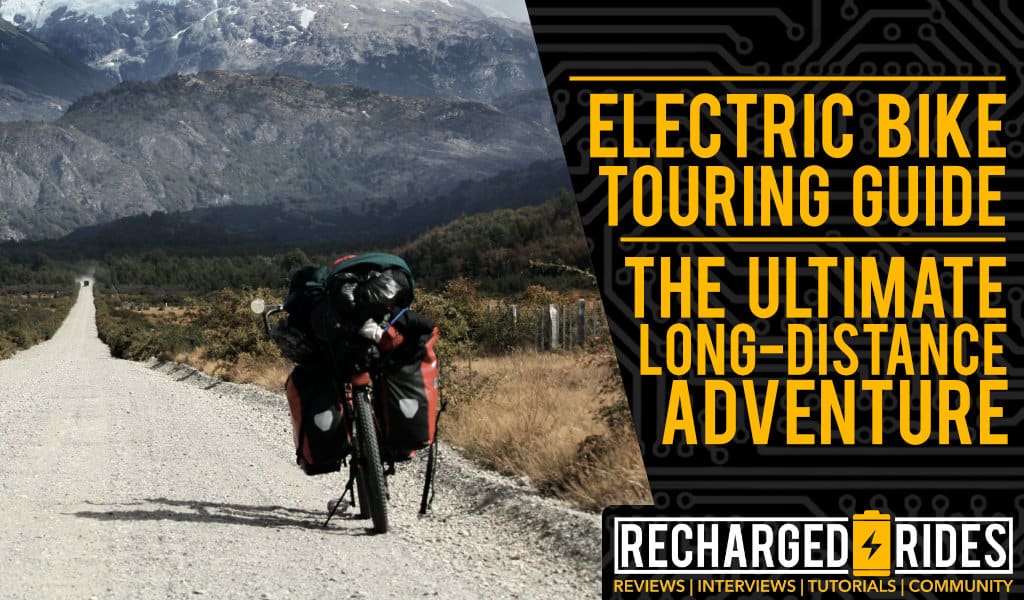
If you’re familiar with electric-powered bicycles, you know that they are an awesome way to commute to work and school — however, have you ever wanted to try e-bike touring?
These days, there are still a lot of people who mistakenly believe that electric bikes aren’t suitable for long-distance rides, but nothing could be further from the truth. Thanks to technological advances, high-capacity batteries, and ultra-reliable electric motors, an e-bike is the perfect modern-day platform for long-range adventuring.
In this ultimate guide to electric bike touring, we’ll take an in-depth look at this adventurous world and provide helpful tips on how to plan the best long-distance tours, how to ensure that you’re prepared for anything and everything, top safety considerations, common challenges, and much more.
What is Electric Bike Touring?
Electric bicycle touring is the ultimate way to explore the outdoors and discover new places. It’s the perfect combination of sightseeing and adventure with long-distance travel capabilities made possible by an e-bike. Powered by an electric motor, e-bikes allow riders to cover greater distances in shorter periods of time while still being able to take in their surroundings.
The world of e-bike touring provides a unique opportunity for keen adventurers looking to push themselves outside their comfort zone and experience something truly special. With the freedom afforded by e-bikes, travelers can embark on longer excursions that may not be achievable through traditional methods with minimal effort required on their part. This gives riders more opportunities to explore off the beaten path, engaging in unique activities such as bird watching or visiting local landmarks along their journey.
What are the Benefits of Using an E-Bike for Long-Distance Tours?
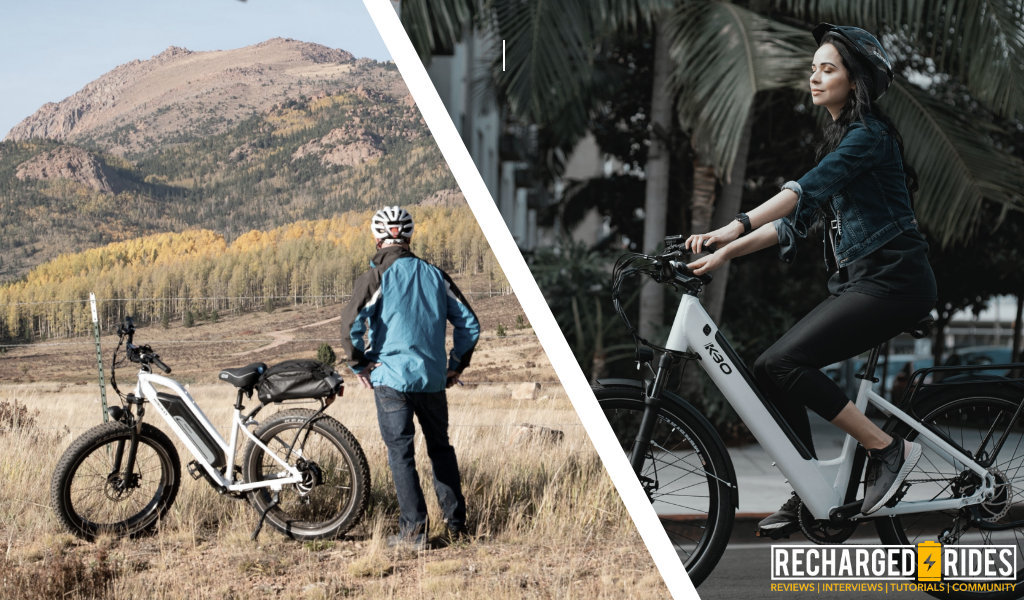
Using an e-bike for long-distance touring provides a wide range of benefits that range from health-related to environmental. In the following sections, we’ll go over some key advantages of e-bike touring and why this super fun activity is enjoying widespread adoption among serious outdoor enthusiasts…
Ease of Use
Electric bicycles have become increasingly popular for long-distance tours. These electric bikes offer a unique combination of convenience, performance, and affordability that cars or motorcycles can’t match.
One of the biggest benefits of using an e-bike for long-distance touring is ease of use. Unlike traditional bicycles, most electric models feature intuitive designs that are easy to ride and control even for novice cyclists. Riding an e-bike requires less physical effort due to its motorized assistance (pedal-assist, or PAS), which makes them ideal for traveling long distances with fewer stops in between. Furthermore, many modern models come with advanced safety features such as top-notch mechanical and hydraulic disc brakes and onboard lighting systems that allow riders to travel safely no matter what time it is.
Greater Range
Offering a greater range than a regular bike, e-bikes riders can go farther and faster without needing to rest as often. Thanks to their built-in lithium-ion battery and powerful electric motor, riders can travel up steep hills with ease and are able to enjoy a more comfortable riding experience compared to traditional pedal-powered bicycles.
Eco-Friendly
An environmentally friendly transport option, e-bikes are powered by a rechargeable battery instead of gasoline, making them a much more sustainable choice when compared to cars or motorcycles. Previous issues like emissions and noise pollution are no longer a concern with electric bikes. Additionally, they are capable of reaching higher speeds than regular bicycles without any extra effort from the rider, allowing them to cover larger distances in less time. This makes them ideal for longer trips where speed is important.
Health Benefits
The physical benefits of using a fully electric touring bike for long-distance riding are many. An electric bike still provides ample opportunity to enjoy a good cardio workout, but the overall stress placed on one’s body is far less than seen with traditional bikes. Riding an e-bike also burns calories more efficiently and can provide significant weight loss benefits. The additional power from the motor allows riders to maintain their speed during long rides and on steep uphill hill climbs, improving both endurance and stamina. Furthermore, some studies have indicated that riding an electric bike can reduce anxiety and improve overall mental health — both of which are big contributors to a healthier lifestyle.
Social Benefits
Going on an e-bike tour also has great social benefits, being an excellent way to get out of your comfort zone and meet new people. Long-distance electric bike trips provide riders with an opportunity to socialize along the way, and many tours involve traveling with a group of friends. If you’re interested in branching out and meeting like-minded outdoor enthusiasts who share your love for adventure, electric bike touring is a great way to do it.
Flexibility
When it comes to long-distance tours, electric bikes provide a ton of flexibility. With pedal assist, e-bikes can adapt to meet the needs and comfort of any rider who is looking to get from point A to point B. E-bikes not only allow riders to take advantage of traditional pedaling, but they also provide an extra boost on those longer rides. This makes them ideal for anyone who wants to explore further than their legs would normally take them.
Cost Efficient
Thanks to advancements in technology, electric touring bikes offer a convenient and affordable alternative to traditional motorized transport. Not only are they more cost-efficient than gas-powered vehicles, but they also require less effort from riders due to the assistance of an electric motor. The range of distance an e-bike can travel is also impressive – depending on the battery size, some models can even reach up to 100 miles on a single charge! This makes them ideal for touring long distances without having to worry about running out of power along the way, and an e-bike doesn’t require frequent (and expensive) stops for refueling.
Fun!
One of the most enjoyable ways to get out and explore nature is through long-distance touring on an e-bike. For avid outdoor adventurers, e-bikes provide a unique way to cover more ground while still enjoying the benefits of being outside and exploring at their own pace. Gone are the days of struggling with strong headwinds and rolling hills — thanks to motorized assistance, electric bikes bring added enjoyment to cycling adventures and are quickly becoming the preference of avid outdoor explorers.
Best Electric Bikes for Long-Distance Touring
Planning a Long-Distance Electric Bike Tour
When planning an electric bicycle tour, there are a number of elements to consider. In this section, we’ll go over some of the key ways we plan out trips and include tips on routes, gear, safety, and more…
Route Planning and Mapping Tools
When it comes to planning for a long-distance electric bike tour, one of the most important considerations is the route. The chosen route will determine the length, difficulty, and overall character of your tour, and it can have a big impact on your safety, comfort, and enjoyment. That’s why it’s essential to invest time and effort into proper route planning and using the right tools and resources to help you do it effectively.
The first things to consider when mapping out your route are starting and ending points. Are you interested in a one-way journey or a round-trip adventure? Would you prefer to begin and end your tour at the same location, or will you be making arrangements to be transported back to the starting point? Additionally, map out specific cities, landmarks, and other points of interest that you’d like to check out along the way.
Next, read up on the type of terrain and general riding environment you’ll be dealing with. Will you primarily be cruising on paved roads, dirt paths, or a combination? Would you prefer flat terrain, or are you comfortable tackling hills (which of course is much easier with an electric bike)? All of these factors will play an important role in the route you select.
To help you plan your route, cyclists have access to a wide range of great mapping tools, including online maps, GPS devices, and smartphone apps. Some of the most popular options include Google Maps, Strava, and Komoot — all of which can help you visualize your route, measure distance and elevation, and pinpoint locations of interest along the way. These popular tools can also help you avoid roads or trails that may be too difficult, dangerous, or inaccessible, and they can provide valuable information about weather, traffic, and other conditions.
Of course, no matter how carefully you plan your route, there will always be some level of uncertainty and risk involved in long-distance electric bike touring. That’s why it’s important to be well-prepared for the unexpected and to have a solid backup plan in place, just in case you encounter unforeseen challenges or obstacles along the way. A good route plan can help you to easily navigate these challenges with confidence, resulting in a more enjoyable and rewarding experience.
Packing and Preparing for Your E-Bike Tour
Packing and preparing is a critical step in the planning process, and one that requires careful consideration and extreme attention to detail. After all, you’ll be carrying everything you need for the duration of your tour, so it’s important to pack wisely and efficiently.
To begin, it’s always a good idea to take an inventory of the gear and equipment you’ll need for your trip. Things like weather, terrain, and trip length will play a big part in gear selection. Below is a checklist of some essential items you’ll need to pack:
- Your E-Bike: Check your electric touring bike over well before heading out and make sure all the components are in good working order. Also, consider packing a spare battery (or two), just in case you’re unable to make it to a recharging point before your battery runs out of juice.
- Clothing: Pack a variety of clothing that’s well-suited to the weather and riding environment you’ll be dealing with. We recommend packing layers to stay warm and waterproof rain gear to keep you dry if things get wet.
- Sleeping Gear: If you’ll be camping or staying in accommodations without bedding, don’t forget to pack a tent (we prefer ultralight models), sleeping bag, and other sleeping gear you consider necessary for a good night’s rest.
- Cooking and Eating Supplies: Are you planning to cook your own meals on the tour? If so, you’ll need to pack a stove, pots, pans, and eating utensils. Additionally, include some non-perishable food and water.
- Tools and Maintenance Supplies: Pack a basic bicycle tool kit, including a multi-tool, tire levers, and a compact tire pump.
- First Aid and Emergency Supplies: A first aid kit and some basic emergency supplies are important to bring along. At a minimum, we recommend a flashlight, a safety whistle, and a personal locator beacon (PLB) in case of an unplanned emergency.
Once you’ve finalized your packing list, it’s important to think about how you’re going to carry it. E-bikes typically have limited space for luggage, so you’ll need to be strategic about how you pack. Some of the best options include a rear rack and panniers, a trailer, or a bikepacking setup. Whichever method you choose, be sure to distribute the weight evenly and securely to avoid affecting the handling and performance of your e-bike.
In addition to packing the right gear, it’s also important to prepare for your tour in other ways. This may include arranging transportation to and from your starting and ending points, making reservations for accommodations or campsites, and researching local amenities and services (more on this below). With some careful planning and preparation, you’ll be ready to tackle your long-distance electric bike tour with ease.
Choosing the Right Gear
Choosing the right gear for your adventure will also be a crucial factor in your success and enjoyment. The right gear can help you stay comfortable, safe, and well-equipped to face the challenges you’ll encounter on road. Conversely, the wrong gear can weigh you down, put you in harm’s way, or worse.
So, what should you look for when it comes to choosing the gear for your long-distance electric bike tour? Here are some pro tips to help you find the best gear possible:
- Purpose: First and foremost, think about the purpose of each item you’re considering packing. What function does it serve, and how essential is it to your trip? Avoid the temptation to go overboard — be sure to pack only the items that are truly necessary, and leave unnecessary or redundant gear behind.
- Weight and Size: Weight and size are also important factors to consider when packing for a long-distance electric bike tour, as you’ll be carrying everything along with you. Choose lightweight, compact gear whenever possible, and be mindful of how much space each item is going to take up.
- Quality and Durability: E-bike touring really puts gear through its paces, so it’s important to choose items that are built to last. Look for gear that’s made from high-quality materials and is made by a brand that has a reputation for reliability.
- Comfort: Since you’ll be spending long hours on the road, comfort is key. Go with top-shelf gear that’s super comfy and fits you well.
- Versatility: Look for gear that can serve multiple purposes or that can be used in a variety of situations. In addition to saving space and weight, this will also provide more flexibility and make it easier for you to adapt to changes during your trip.
- Climate and Conditions: Consider the climate and conditions you’ll be riding through, and choose gear that’s appropriate for those conditions. This may include rain gear, warm layers, protective gear, and other items that can help you stay comfortable and safe.
By carefully choosing the right gear for your long-distance e-bike tour, you’ll be better equipped to tackle any challenges you may face on the road and enjoy your tour to the fullest.
Trip Safety
Trip safety goes beyond just packing the right gear and mapping out your route. It also involves taking care of yourself and your electric touring bicycle throughout the tour, as well as being ready for any and all challenges you may encounter on the road. Here are a few of our top recommendations for staying safe during your trip:
- Hydration: Staying hydrated is essential for maintaining your energy, endurance, and overall health during an electric bike tour. As we mentioned earlier, pack plenty of water, and be sure to drink regularly throughout the day. This is especially important during summer trips where you’re riding in hot or humid conditions. Electrolyte tablets and sports drinks are also helpful when it comes to replenishing lost fluids and nutrients.
- Nutrition: Proper nutrition is also critical for maintaining your energy and stamina during long-distance adventures. We like to bring along a variety of non-perishable, high-energy foods, such as nuts, dried fruits, energy bars, and jerky. Remember to eat regular meals and snacks to keep your energy levels up.
- Rest and Recovery: Thirdly, in order to give your mind and body an opportunity to recover and recharge, it’s important to take regular breaks and rest periods during your trip. When planning your route, incorporate occasional stops and allow for ample rest time.
Electric Bicycle Tour Riding Tips
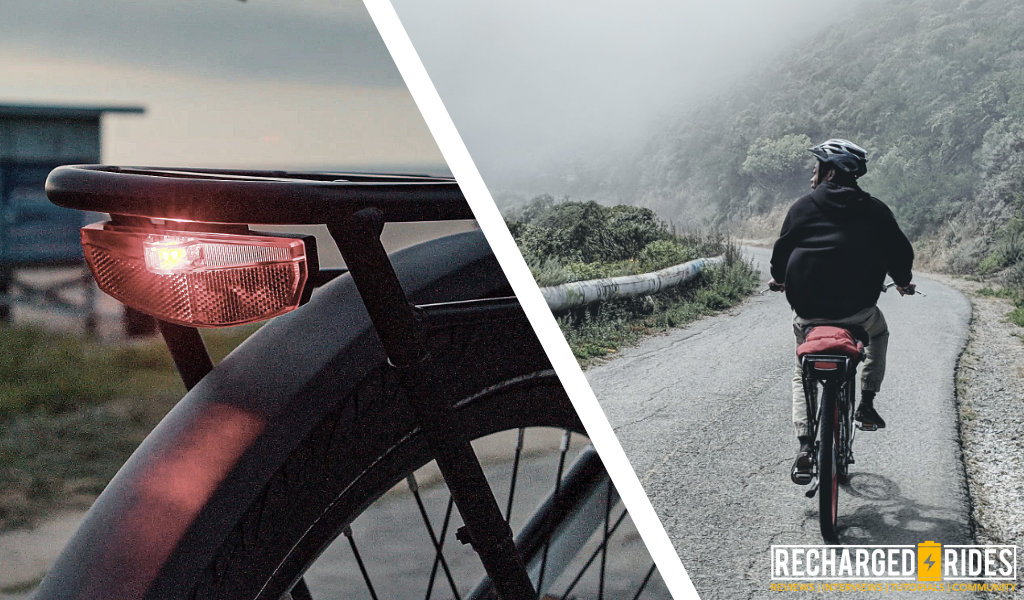
If you want to enjoy many fun years of touring, the following best practices will serve you well when it comes to enjoying safe and memorable trips. From proper posture and riding technique to charging and maintaining your e-bike while on the road, these tips will help to ensure that your trips are healthy and fun.
Techniques for Relaxed Riding
While fun, riding an electric bike for long distances can also be physically and mentally demanding. To help you stay relaxed and comfortable during your trip, it’s important to adopt good riding techniques that promote efficiency and reduce the overall strain on your body. Here are some of our top tips for staying relaxed while riding:
- Proper Posture: When riding long distances, good posture is essential for comfort and control. Keep your back straight and your arms relaxed, and position your feet on the pedals so that you can apply power efficiently.
- Relax your Grip: It’s natural to maintain a tight grip on the handlebars when riding, especially when facing challenges or obstacles. However, a tight grip is a major contributor to fatigue and tension in the arms and shoulders. Instead, try to relax your grip and let your hands rest lightly on the handlebars.
- Use your Core Muscles: When it comes to maintaining good posture and balance, your core muscles play a critical role. Engaging your core muscles while riding will help to support and stabilize your upper body.
- Shift your Weight: Your weight distribution can also affect both riding technique and comfort. When facing steep inclines or other challenges, try shifting your weight forward and down over the pedals to help maintain traction and stability.
- Take Regular Breaks: It’s important to take regular breaks during long trips. When planning your trip, factor in stops and allow for ample rest time.
Charging and Maintaining Your E-Bike While on the Road
Taking care of your e-bike while you’re out on the road is an essential part of any successful long-distance electric bike tour. Without a properly charged and well-maintained e-bike, you might find yourself stranded or unable to complete your trip.
When it comes to ensuring that your electric ride runs smoothly for the duration of your adventure, be sure to follow these tips:
- Charge your Battery Regularly: E-bike battery range can vary greatly depending on a variety of factors, including terrain, weather, and rider weight. To guarantee that you have enough power to complete your tour, it’s important to charge your battery at every opportunity. If you’re planning to tour an area with limited access to electricity, consider packing a portable charger or spare batteries.
- Check your Battery Level: In addition to recharging your battery, it’s also important to keep a close eye on your e-bike’s battery level. Doing so will help you to avoid unpleasant surprises where your battery dies unexpectedly.
- Maintenance: Properly maintaining your ride while on the road is critical when it comes to performance and overall reliability. This is especially true on a long-distance tour, where your gear will be put through the wringer and thoroughly tested. Be sure to check over your bike regularly, and address any issues or problems as soon as they arise. It’s recommended that you frequently check tires, brakes, and wiring, stay on top of chain cleaning and lubricating, and tighten up any loose bolts or screws.
- Pack a Bike Repair Toolkit: As we mentioned above, it’s a really good idea to bring along a basic e-bike repair toolkit. Having access to some basic tools will ensure that you’re able to fix common problems while on the road. A few basic essentials that we’d highly advise you to pack include a multi-tool, tire levers, and a pump.
Navigation and Communication
Whether you’re touring solo or with a group of riders, it’s vital to stay connected and well-informed. In this section, we’ll discuss some things you can do to improve your ability to communicate and navigate:
- Use a GPS Device or Smartphone: A GPS device or smartphone can be a valuable tool when it comes to navigating long-distance rides. These handy devices provide real-time location tracking and route guidance and can help you stay on track.
- Pack a Paper Map: While GPS devices and smartphones are convenient, they can also be unreliable or run out of power. A good plan B is to pack an old-school paper map, just in case you run into any problems with your electronic devices.
- Use a Communication Device: Communication devices, such as a cell phone, satellite phone, or walkie-talkie, will help you to stay connected on your adventure, giving you a convenient way to communicate with others while on the road. These devices will also help you to stay in touch with friends and family, and in case of an emergency, help is only a call away.
- Stay Visible: It’s important to maintain visibility and be easily identifiable to others while on your trip. Wear bright, reflective clothing, and use lights and signals as appropriate to communicate your intentions to drivers and other riders around you.
By following these tips and using the right navigation and communication tools, you can stay connected and informed while avoiding the unpleasant hassles of getting lost or stranded.
Dealing with Common Challenges and Emergencies
Regardless of how well you plan and prepare, there will inevitably be challenges and emergencies that arise while touring. From flat tires and mechanical issues to unexpected weather events and other unforeseen circumstances, it’s important to be prepared and have a plan in place to deal with these challenges and emergencies. Here are some tips for dealing with common challenges and emergencies while on the road:
- Know How to Fix a Flat Tire: Flat tires are a common occurrence on e-bike tours, and because of this, it’s important to know how to fix them. Bring along a spare tube, patch kit, and the tools needed to change a tire.
- Learn Basic E-Bike Maintenance: Familiarize yourself with basic mechanical skills so that you can fix common problems that pop up during your trips. There are many great resources available to help you with this, such as YouTube tutorials and online bike repair classes.
- Pack for the Weather: Weather can be unpredictable, and you should always be prepared for a range of conditions. Pack appropriate clothing and gear for the weather, and be prepared to adjust your route or schedule if necessary.
- Emergencies: In case of an emergency, have a solid plan in place to call for help and get to safety. Once again, be sure to pack a cell phone, a personal locator beacon, or a satellite phone, and always inform someone of your route, route changes, and expected arrival times.
Accommodations and Amenities
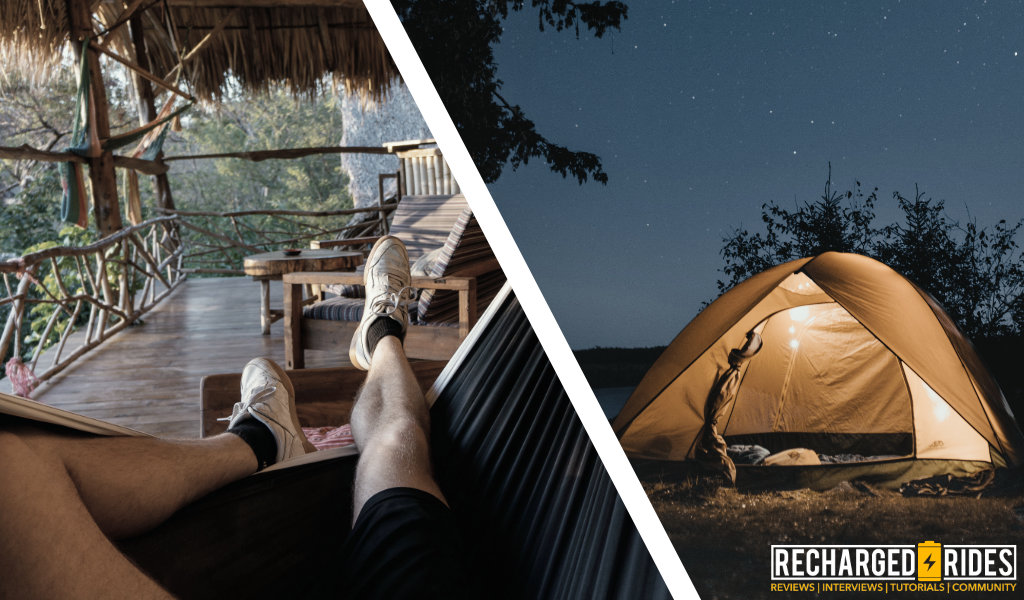
When you’re in the process of planning an e-bike touring trip, another important topic that needs to be taken into account is amenities and accommodations. From camping to hotels and hostels, there are many different options available — each with its own pros and cons.
In this part of our comprehensive guide on e-bike touring, we’ll check out some of the various accommodations and amenities available for electric bike tours. Some of the topics covered include camping, hotels, hostels, Airbnb, and eating options. Lastly, we’ll also provide you with some little-known strategies for maximizing your comfort and convenience on the road. Whether you’re riding alone or with friends, this information will help you find the perfect accommodations for your needs.
Camping
When looking for campground accommodations, cyclists should research the location in advance to ensure that all needs can be met. There are two primary types of accommodations: traditional campgrounds and dispersed camping locations. Traditional campgrounds offer amenities such as bathrooms, fire pits, picnic tables, designated tent areas, running water, trash receptacles, and possibly even electricity or Wi-Fi access while dispersed campsites may only have a cleared area with no other amenities but can offer more privacy than traditional campgrounds.
Hotels, Hostels, and Airbnb Accommodations
Hotels, hostels, and Airbnbs all offer different amenities and accommodations for travelers, so it’s important to understand the differences before you choose where to stay.
Hotels typically offer a range of amenities from on-site restaurants and swimming pools to fitness centers and spas. Depending on the hotel, they may also have bike storage options or even provide complimentary bikes for guests. However, hotels tend to be more expensive than other accommodation options.
Hostels are usually much more budget-friendly than hotels but may not offer as many amenities in exchange for their lower prices. Many hostels will have basic facilities such as laundry rooms or communal kitchens that can help save money while traveling.
When selecting an Airbnb rental, look for properties that provide secure storage areas where you can lock up your electric touring bicycles while not in use. Additionally, be sure to check out reviews from previous guests to determine if the property offers other features that are important for cyclists such as bike repair tools or access to nearby cycling routes. Many Airbnbs also have washing machines so you can clean your cycling gear after a long day on the road.
Where to Eat
There are many things to consider when it comes to finding places to eat. You’ll want to look for restaurants that offer healthy, nutritional meals at reasonable prices. In addition, be sure that the restaurant can securely accommodate your electric bike while you’re eating so that it stays safe and secure until you’re ready to hit the road again. Make sure there’s adequate parking available too! Lastly, it’s always a bonus if you can find restaurants with reliable Wi-Fi access, giving you a convenient way to answer some emails or finish up some quick work on your laptop.
Special Considerations for E-Bike Touring
Electric bike touring requires unique considerations in order to complete a successful journey. From climate and terrain to solo adventures versus group tours, it’s important for riders to be prepared for any number of potential obstacles.
In the following sections, we’ll discuss several things that are sometimes overlooked when a tour is being organized.
Climate
Climate is an important consideration for anyone planning a long-distance electric bike tour. In addition to affecting the rider, climate can also have an impact on the range and performance of your electric bike. Taking the time to plan out your tour route is essential, as extreme temperatures both hot and cold can limit your range significantly and may require additional preparation. In cold climates, make sure you store your battery indoors overnight, and in warm climates watch out for heat-related battery problems like thermal runaway.
You should consider factors such as temperature, precipitation, wind speed, and sunshine hours when selecting the time of year and route for your journey. You may need to make allowances for extreme weather events like hot spells or storms that could affect your trip plans. Additionally, take into account terrain type and altitude when considering how much energy you’ll need from your electric bike battery to reach destinations along the way.
Terrain
Another thing that’s essential to consider is the terrain you’ll be covering on your trip. Of course, with an electric bike, you can take on any hill or incline that might come your way. But terrain is more than just hills; other elements like off-road trails, gravel roads, and cobblestone paths should all be taken into consideration when mapping out your route.
E-bikes are designed with powerful motors to help cyclists tackle any type of terrain they encounter on their journey. Electric bicycles aren’t invincible, however — if riders push themselves too hard, they could cause damage or even injury to themselves or the bike. It’s important to plan ahead and research which parts of the ride may require extra caution due to potential obstacles such as mud or rocks.
Solo Adventures vs. Group Tours
Should you embark on a solo adventure or opt for a group tour? The decision between these two options can drastically shape the experience, making it essential to weigh the pros and cons of each before committing to a particular adventure.
Solo adventures offer travelers unparalleled freedom and flexibility; they can go wherever they want, when they want, and take in their surroundings at their own pace. Solo touring also allows for personal growth and self-discovery that may not be experienced in a group setting. On the other hand, individuals embarking on solo tours need to be prepared for more responsibility in terms of route planning and navigation, as well as having proper safety systems in place should something go wrong.
Cultural Differences and Language Barriers
When planning a longer-distance e-bike tour, cultural differences and language barriers must be taken into consideration. As with any international travel, it is important to research the customs and culture of the countries visited. This includes learning key phrases in the native language and understanding their cultural norms. For example, some countries may have different laws regarding when cyclists are allowed on roads or require special helmets for safety reasons. Additionally, travelers should be aware of how their actions might be perceived by locals — should they interact verbally or keep to themselves?
Furthermore, issues such as currency exchange rates, health and safety protocols, and even dietary restrictions must be planned for in advance. Being mindful of these details can help avoid potential problems while abroad that could hinder an otherwise enjoyable experience.
Final Thoughts
Our comprehensive guide on long-distance e-bike tours has come to a close, but it’s only the beginning of your journey. Whether you’re an experienced cyclist or a beginner, electric bike touring is one of the most exciting and rewarding ways to explore the world.
With the right planning and preparation, you’ll be able to make the most out of your trip. Consider factors such as terrain, climate, travel time, and budget when selecting routes for your tour. Invest in quality gear that can withstand extreme conditions and wear comfortable yet practical clothing that will keep you safe during cycling expeditions.
Last but not least, find reliable companions who share similar interests and have adequate knowledge about navigation techniques and safety protocols — these people will be invaluable throughout your journey.
Happy riding!

